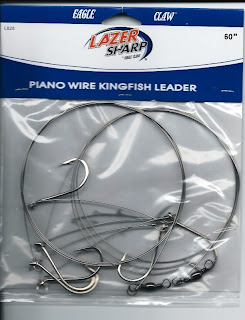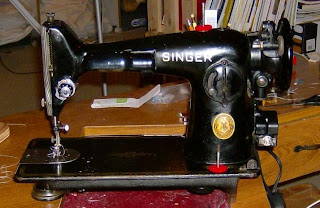Progress has been slow on the 201 because we are gearing up for craft show season. I spend the majority of my spare time making wrist wallets and table runners and get very little time to tinker with sewing machines.
I learned that the bobbin winder kickout spring is broken and the bobbin winder rests on the balance wheel all the time. I didn't have a spare spring but they are available on the internet for $4.25 plus shipping or $9.99 with free shipping. The price was a little bit of a deterrent, since I only paid $12 for the machine, I hesitated to spend another $10 on a measly little spring but the major issue was that I would have to wait for it to be shipped. The spring is a very simple affair, just three coils of spring wire with a bend on one end and a 1.25" leg on the other so I surfed the internet for instructions how to make a spring. Lowe's sells a package of four assorted sizes of spring wire for $2.98 and I picked up a pack.
. Each piece is only 6 inches long and I needed 4.5 inches for the spring, Knowing I would only get one shot, I got some fishing tackle with piano wire at Wal-Mart to make some prototypes by winding the wire around a bolt..
The fourth prototype fit but the piano wire is not strong enough to keep the bobbin winder suspended when the machine starts running. This evening, I made a spring using the Lowe's spring wire and it works fine.
While unsuccessfully searching my spare parts boxes for a kickout spring, I encountered a stroke of good luck - I found a 201 terminal block! I was already prepared to manufacture a box to contain the light switch but the switch I got at Lowe's fits just fine in the 201 terminal block. I got this box of 201 parts about 20 years ago from a lady who had parted out some 201s and wanted to reclaim some space in her garage. That's why I hate to throw anything out, you never know when you might need it.
When it's running, it still has a little buzz that shouldn't be there but seems to be lessening with use. If it doesn't go away soon, I will break out my mechanic's stethoscope and track down the source. Here's the almost-finished product.
Now that I see the photos, it appears I still need to do some more cosmetic restoration (cleaning). Honestly, it looks better in person.











